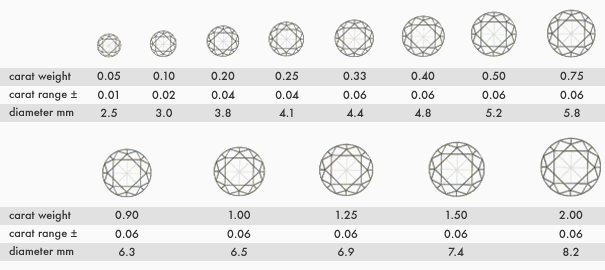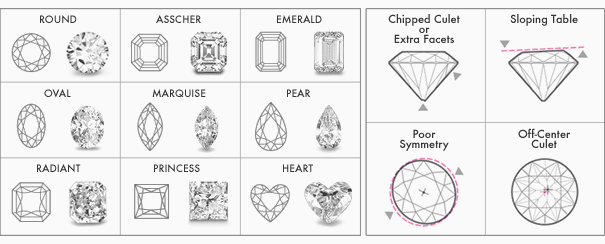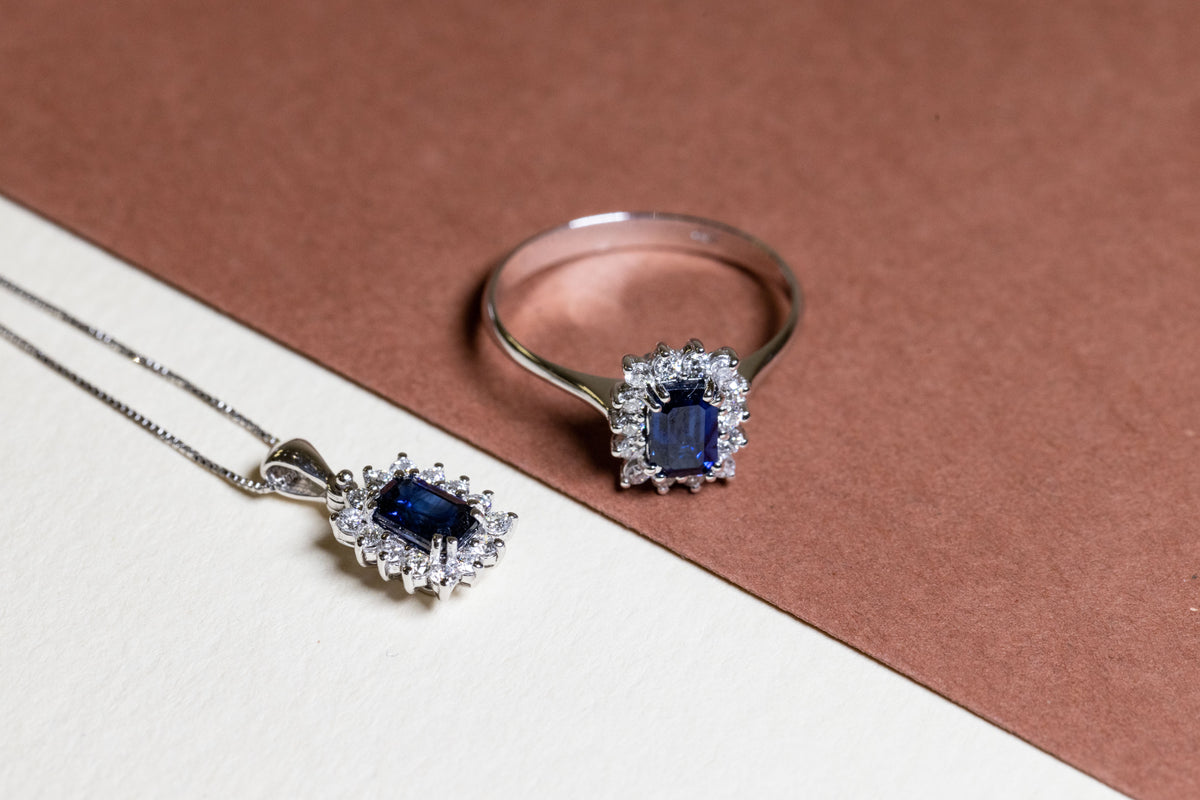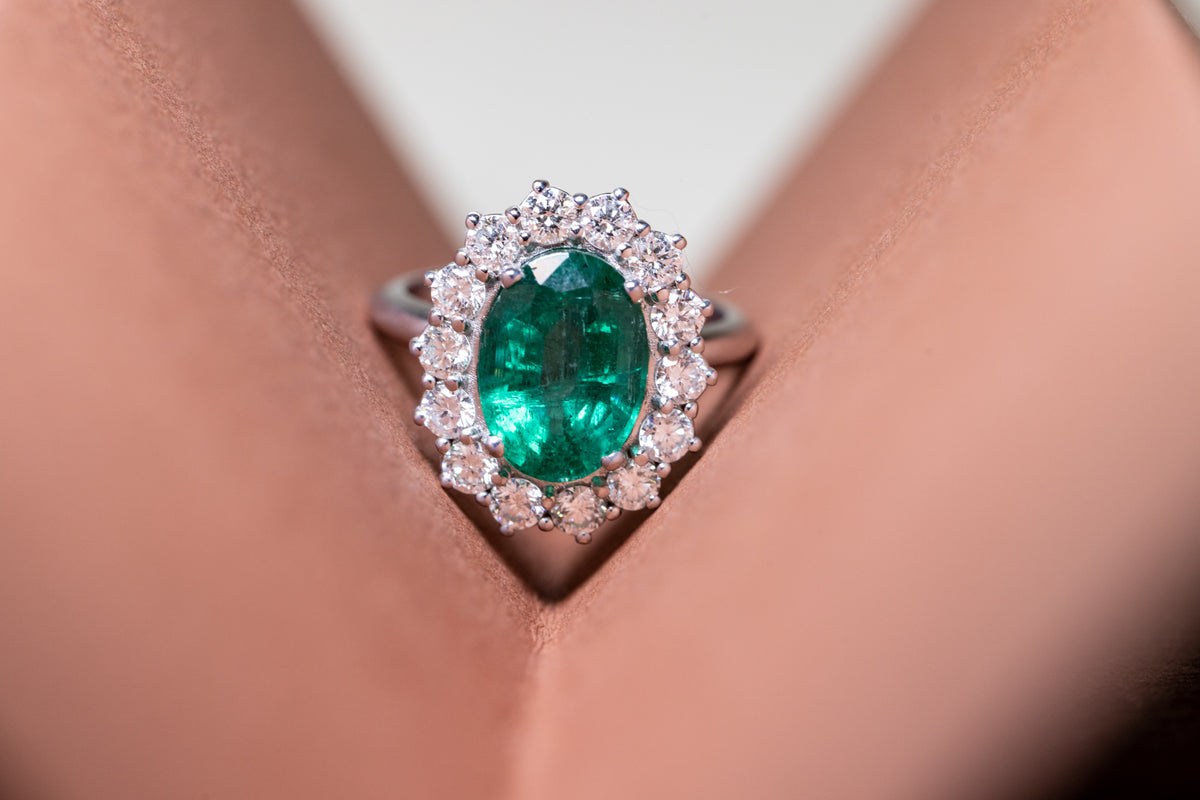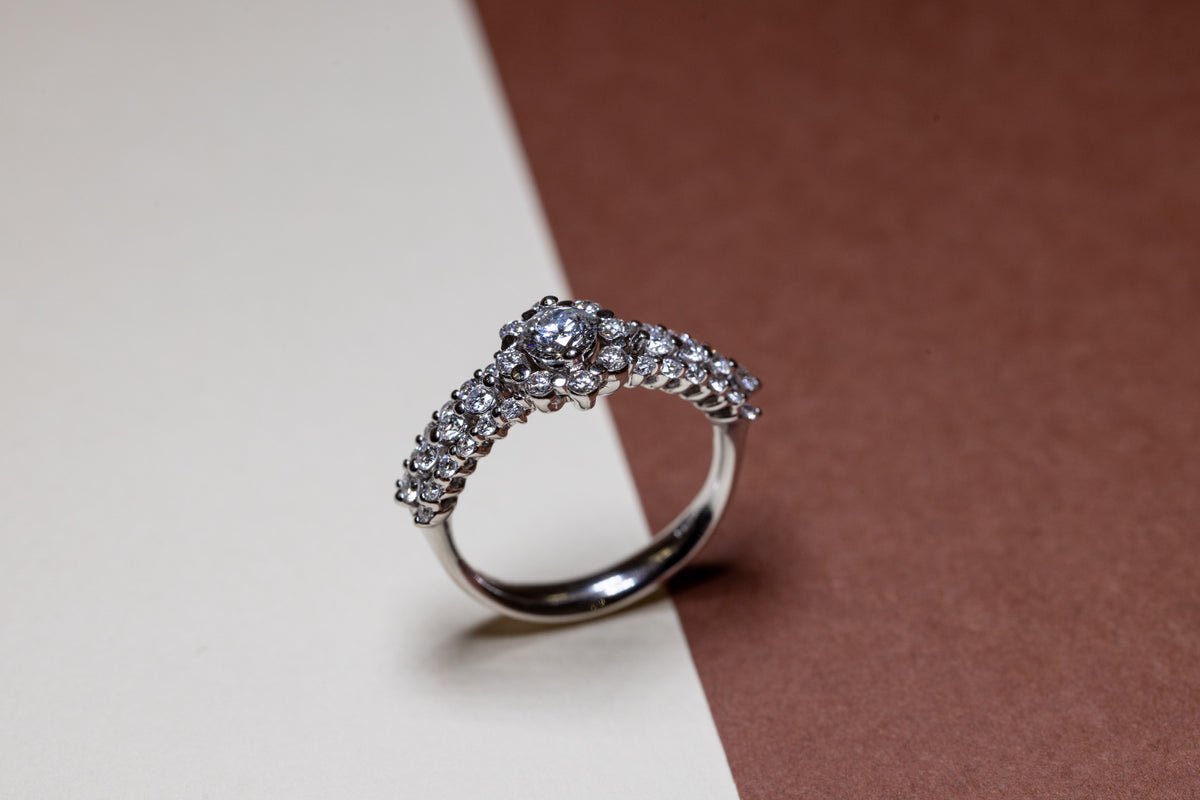The 4Cs of Diamond: A Crystal Clear Knowledge
Those who are not really experts may get a little confused between a diamond and a brilliant .
In this article we will understand together the importance of the characteristics that make a diamond unique and exclusive.
Some considerations on the differences of a stone.
The first is the rough stone ; the second is the stone cut and worked following the criteria of a particular type of cut called " brilliant " which gives maximum brightness to the stone itself.
The worked diamond is subjected to an accurate gemological analysis following which it is assigned an exact qualification from which a specific commercial value derives.
The value of a diamond is defined on the basis of four classification parameters, namely the famous 4 C from the initials of the English terms:
Carat (Weight )
The weight of diamonds is expressed in carats ( 1 carat = 0.20 grams ). The carat is in turn divided into hundredths called " points ".
The crystal lattice of diamond often presents interruptions that can depend on crystal inclusions, cavities, cracks, twinning planes, structural lines, cleavages and internal stresses.
Pure diamonds are those cut diamonds which, when observed with a 10x magnification lens , no inclusions.
In Germany and Italy, the term purity refers to internal perfection, while in the USA and Scandinavia, external characteristics are also taken into consideration.
In Europe and the United States, the purity of a diamond is measured using the following scale ( called GIA ):
- IF or LC (internally flawless or loup clean) = lens pure, free from internal characteristics at 10x.
- VVS 1 - VVS 2 (very very small) = inclusions that are extremely difficult to detect with a 10x lens.
- VS1 - VS2 (very small) = very slight inclusions that are difficult to detect with a 10x lens.
- SI1 - SI2 (small inclusions) = small inclusions that are easy to detect with a 10x lens.
- P1 (I1) (I Piqué) = inclusions immediately visible with a 10x loupe and difficult to detect with the naked eye through the crown.
- P2 (I2) (II Piqué) = large and numerous inclusions, easily visible to the naked eye through the crown.
- P3 (I3) (III Piqué) = large and numerous inclusions, very easily visible to the naked eye through the crown. Significant reduction in the brilliance of the diamond.
North America has pioneered the definition of diamond colors, probably due to its high import share of ornamental diamonds, accounting for over 50% of world production.
In the colorless to yellow series, the color grades are also defined by reference to the places where the diamonds come from.
In fact, they are the names of the ancient diamond mines or alluvial deposits from which the term " river " was handed down for diamonds coming from rivers and which meant stones that generally had a better colour than diamonds coming from chimneys or " pipes ".
To these definitions were then added unique definitions of diamond color:
- RIVER: (white-blue)
- TOP WESSELTON: (excellent white)
- WESSELTON: (white)
- TOP CRYSTAL: (lightly tinted white)
- CRYSTAL: (tinted white)
- TOP CAPE: (slightly yellowish)
- CAPE: (yellowish)
- LIGHT YELLOW: (light yellow)
- YELLOW: (yellow)
It is necessary to delve deeper into the nature of the colouring substances in diamonds, or rather the cause of the colour, about which nothing can be said with certainty.
It is believed that the various colours are due to the presence of iron, titanium, samarium and chromium atoms but it is not excluded that they are of radioactive origin.
In some natural colored diamonds analyzed in the laboratory by means of highly sensitive spectrographs, the presence of approximately 14 different elements has been found.
In theory, colour is to be considered a serious defect with a notable penalty on the value of the stone but, when it is marked and characterising, it excludes the stone from the normal colour categories and places it in the classification of so-called " fancy " diamonds, which are highly sought-after and, consequently, of high value.
The most commonly used cut is the round " brilliant " or Amsterdam cut: 58 facets , or better 57+1 , considering 1 the smoothing of the tip of the lower cone, called Culet.
This cut is the one that best highlights the phenomena of refraction and reflection of light in the diamond and is therefore the most appreciated and accepted.
The shape and perfection of the cut take on absolute importance in determining the value of a gem.
There are precise proportions between the dimensions of the various components ( table, crown, pavilion, belt ) that must be respected to obtain the maximum result.
The cut classification has four parameters:
- VERY GOOD : excellent cut, without any deviation from the prescribed tolerances.
- GOOD : good, with slight deviations from the prescribed tolerances (less than 5%).
- MEDIUM : medium, with significant deviations from the prescribed tolerances (less than 10%).
- POOR : poor, with serious deviations from the prescribed tolerances (greater than 10%).
If a diamond has an ideal cut, light rays coming from all directions are deflected toward the center of the stone and reflected through the top in a flash of light.
If a diamond does not have the ideal cut , the light will be " lost " on the sides ( too high cut ) or on the bottom of the stone ( too low cut ).
Beyond the 4 Cs – Other Characteristics of Diamonds
We have seen the 4Cs ( carat, color, clarity and cut ) which represent the basic factors for classifying and evaluating a gem.
But when choosing a gemstone for an investment, it is necessary to analyze more deeply not only the classic 4Cs but also the other characteristics of the diamond.
The three main ones are:
Symmetry: (symmetry)
Finishing or polishing: (polish)
Fluorescence: (fluorescence)
Let's see them in detail:
Symmetry
Diamond symmetry measures the overall uniformity of a stone's cut, which can range from poor to excellent.
Poor symmetry will affect the sparkle and fire of a diamond due to the reduced light passing through the stone.
In pictures, diamonds are always represented as perfectly symmetrical. But in the real world, few are. In particular, the stone can present defects such as:
- the table is not perfectly octagonal
- the crown and the pavilion are not perfectly aligned
- the table is off center
- the apex is off center
- the belt is not rounded
- the plane of the table is not parallel to that of the belt
- an irregular outline of the facets
- the presence of natural and additional veneers
Each defect can manifest itself in a mild or pronounced manner.
Most laboratories judge the symmetry of the stone on a scale that includes the values: Excellent ( or Ideal ), Very Good , Good , Fair , Poor ( Excellent or Ideal, Very Good, Good, Average, Mediocre ).
There are some important differences in ratings between laboratories that you should be aware of.
And above all remember that a diamond with excellent symmetry does not imply that it is well-proportioned.
Finish
The term Polish in Italian it is translated as polishing, finishing, sheen or even polishing. But often in the sector finishing or cutting cleaning is used.
Polishing is rated in certificates on the same scale as symmetry, from Excellent to Poor . AGS adds category Ideal above all.
The polishing process can cause damage to the stone: abraded edges, feathered belt, polishing marks, chipping, scratches, burn marks. Obviously these defects can then assume more or less significant proportions.
Poor diamond finishing can reduce the intensity of reflected and refracted light.
A polish grade of good or lower may leave the impression that the stone needs cleaning.
Standard or mediocre polish will affect the visual appearance of the diamond.
On a low purity diamond ( SI or VS ) polishing has less influence. But on diamonds of higher purity, especially Flawless or IF, it is necessary to aim for Ideal or Excellent polishing.
Fluorescence
Fluorescence is caused by the reaction of diamond to ultraviolet ( UV ) rays.
Some diamonds can shine in different colors under UV light.
Fluorescence is temporary, that is, it begins and ends upon exposure to UV rays.
Based on the intensity of the emitted light, four degrees of fluorescence are determined by means of touchstones:
- Nothing: (Nil/None)
- Weak: (Slight/Faint)
- Medium: (Medium)
- Strong: (Strong)
About a third of diamonds exhibit fluorescence. The most frequent is bluish in color.
Since blue is a complementary color to yellow ( the typical color of diamonds ), the presence of blue fluorescence can make a diamond appear whiter.
In addition to blue, fluorescence can acquire other colors such as yellow or orange. Unlike blue fluorescence, these worsen the appearance of the diamond's color.
It's best to avoid them unless they are fancy diamonds.
Although there is some debate as to whether fluorescence is a good thing or a bad thing ( and there is still no clear answer ), this characteristic has a negative impact on the price of a diamond.

